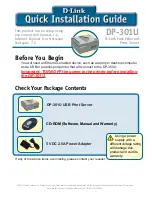
9
This method of printing characters is not new but the method of moving this
wire impact print head is unique. Rather than using dual motors, clutches timing
bars and the other hardware usually associated with this type of print head, this
printer rotates a long cylinder just beneath the print head. The length of the
cylinder itself is a little longer than the head's printing width on the paper.
The cylinder has a uniform single cyclic zig-zag track formed on its outer
circumference, running from the left side of the cylinder to the right side then
back to the left again. A small projection on the bottom of the print head rides
in this track so that as the cylinder rotates the print head moves back and forth
from left to right. This technique moves the print head across the paper at a
constant velocity except for the extreme ends, where nothing is printed anyway.
This approach greatly simplifies the electronics needed to drive the printer
since no head positioning circuitry is necessary. The cylinder itself is turned
by an AC motor on the lower right hand side of the print mechanism. A small
ribbed nylon belt interconnecting the two rides on gear teeth of both the motor
and cylinder. Also attached to the right side of the cylinder is a cam that
actuates a roller arm micro-switch riding on the cam. This is how the printer's
electronic circuitry senses the "start of line" position of the print head. On
the left side of the cylinder is an eccentric driven pawl arm that advances the
paper one line for each revolution of the cylinder which is the same as one cycle
of the print head.
Let's go thru a cyclic operation of a printed line where we will first
assume the head is in rest position just left of center. When a line print
command is initiated by the control circuitry, the motor starts and the head
begins to move from the center position toward the far left side of the printer
where the head reverses direction. This non-print dead zone gives the motor,
cylinder, and print head time to attain full speed. As the head begins its
movement from left to right, the cam actuated micro-switch opens telling the
electronic circuitry to start outputting character forming solenoid driving
pulses. Somewhere before the print head reaches the far right hand edge of the
paper the solenoid pulses will cease while the head continues to move. When the
head reaches the right end of its travel, it will reverse direction and begin to
move back toward the center of the printer. During this return movement, the pawl
arm will rotate the platen one line for the line feed. The motor is then turned
off just to the left of center where it started originally. Character data is not
accepted by the printer's circuitry during an actual print cycle, however feeding
continual print data from a computer to the printer may take place so fast that
the print motor may never appear to stop between repeatedly printed lines
although it actually does.
The operation of printing ribbon used on the unit is also amazingly simple.
A ratchet technique not only advances the ribbon incrementally for each cycle of
the print head but automatically reverses it when it reaches the end of one of
the two spools. This means you need only change the ribbon when the printing
become too light for easy legibility.
The Electronics
The electronic circuitry driving the fore mentioned print mechanism can
vary from nothing but motor and solenoid drivers constantly serviced by the
microcomputer to a fully self-contained hardware control unit with memory needing
only 7 bit parallel ASCII data and a "data ready" strobe control line from the
computer. This printer system fits into the latter category. The printer has its
own 40 character FIFO (first in - first out) memory allowing the computer to send
character data at whatever speed it wishes. The entire line is printed upon
receipt of a carriage return (0D16) or automatically whenever the 40 character




































